- What is Quince?
- Uses of Quince
- Growing Quince
- Grafting and Pruning Quince Trees
- Choosing the Right Variety for Your Garden
- Cydonia oblonga
- Champion
- Smyrna
- Pineapple
- Other Considerations
- Planting and Growing Quince
- Choose a Suitable Location
- Prepare the Soil
- Planting the Quince Tree
- Watering and Fertilizing
- Pruning and Training
- Pest and Disease Control
- Harvesting the Fruit
- Pruning Quince Trees
- Grafting Quince Trees
- 1. Choose the Right Time
- 2. Select the Scion Wood
- 3. Prepare the Rootstock
- 4. Make the Graft
- 5. Secure the Graft
- 6. Protect the Graft
- 7. Monitor and Prune
- Common Pests and Diseases of Quince
- Pests
- Diseases
- Harvesting and Using Quince
- Harvesting Quince
- Using Quince
- Storing Quince
- Conclusion
- Question-answer:
- What is the best time to plant quince trees?
- Do quince trees require full sun?
- Can quince trees tolerate drought?
- What is the purpose of pruning quince trees?
- How should quince trees be pruned?
- Can quince be grafted onto other fruit tree rootstocks?
- Video: CHIP-BUD EASY GRAFTING TECHNIQUE | Peach, Plum, Citrus, Kiwi, Grape, Fig | FRUIT TREE GRAFTING

Quince, also known as Cydonia oblonga, is a versatile fruit tree that can be a wonderful addition to your garden. It is a hardy and low-maintenance plant that produces fragrant fruits with a unique flavor. Whether you are a seasoned gardener or just starting out, growing quince can be a rewarding experience.
When it comes to growing quince, it is important to choose a suitable location. Quince trees prefer full sun and well-draining soil. They can tolerate a range of soil types, but they thrive in slightly acidic soil. Before planting, make sure to prepare the soil by adding organic matter and ensuring proper drainage.
Pruning quince trees is essential for maintaining their shape, promoting air circulation, and ensuring maximum fruit production. It is best to prune quince trees during the dormant season, typically in late winter or early spring. Remove any dead or damaged branches, as well as any branches that are crossing or rubbing against each other. This will help create an open canopy and prevent disease.
Grafting is another technique that can be used to propagate quince trees. Grafting involves joining a scion (a piece of the desired variety) onto a rootstock (a different quince variety or a compatible fruit tree species). This allows you to combine the desired qualities of different varieties and produce a tree that is better adapted to your specific growing conditions. Grafting is usually done in late winter or early spring when the tree is dormant.
“Quince is a versatile fruit tree that can bring beauty, fragrance, and delicious fruits to your garden. With proper care and attention, you can enjoy the unique flavor of quince and take pride in growing your own tree. Whether you are harvesting the fruits or simply admiring the beautiful blossoms, growing quince can be a delightful and rewarding experience.”
By following these tips for growing, pruning, and grafting quince, you can ensure a healthy and productive tree in your garden. So why not give quince a try and enjoy the beauty and flavor it brings to your outdoor space?
What is Quince?
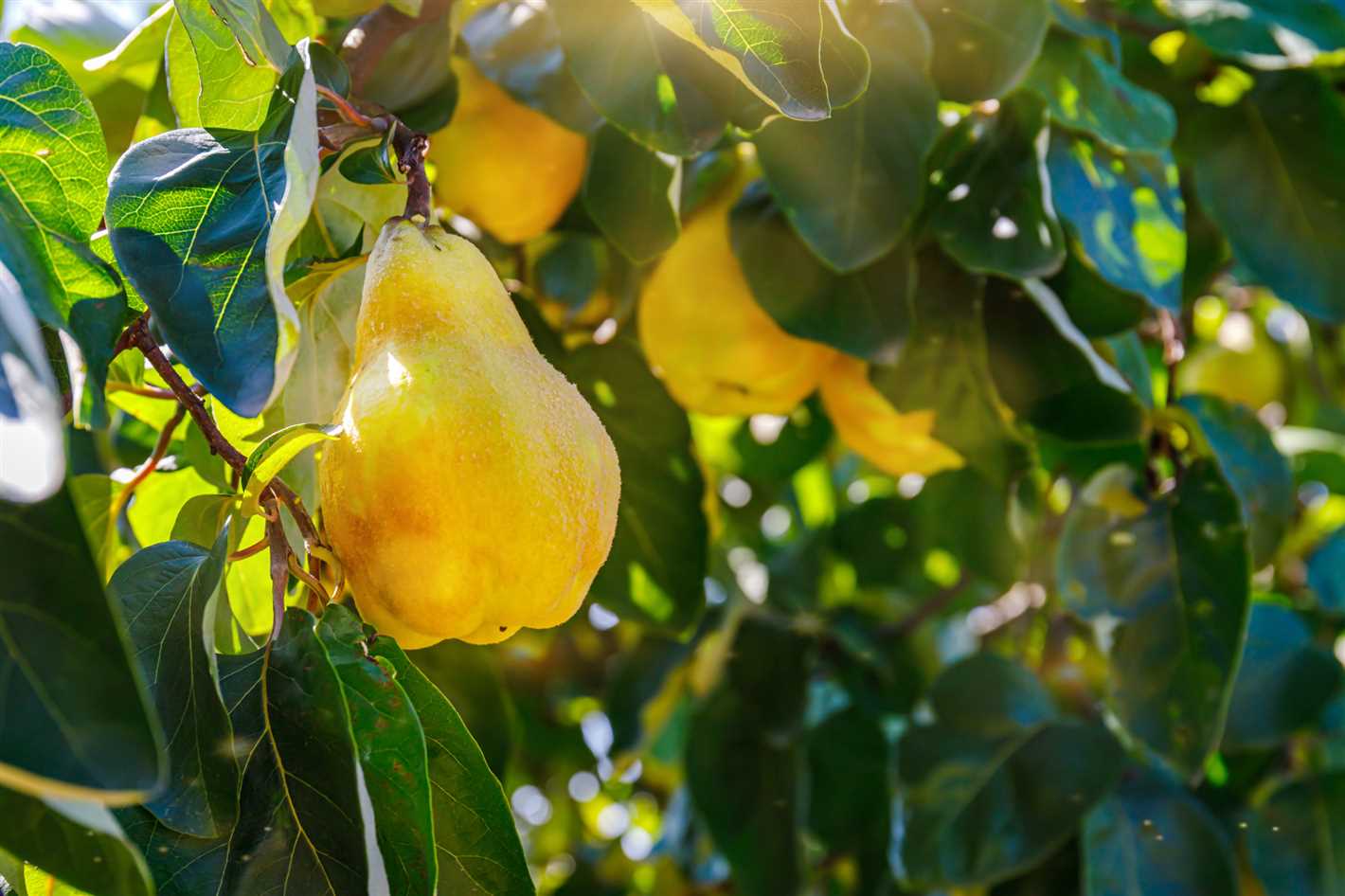

Quince is a fruit-bearing tree that belongs to the family Rosaceae. It is native to Southwest Asia and has been cultivated for centuries for its fruits. Quince fruits are large, yellow, and have a distinctive aroma and taste. They are similar in shape to pears but have a rough, fuzzy skin.
Quince trees are deciduous and can grow up to 15-20 feet tall. They have thick, long-lasting branches and simple, ovate leaves. The flowers of the quince tree are pink or white and have a pleasing fragrance.
Uses of Quince
Quince fruits are not typically eaten raw due to their astringency and tartness. However, they are commonly used in cooking and baking, especially in preserves, jellies, and marmalades. Quince fruits contain a high amount of pectin, a natural thickening agent, which makes them ideal for use in making jams and jellies.
Quince is also used in the production of alcohol, such as quince liqueur and quince brandy. The fruit can be fermented to produce a tangy, aromatic wine. In addition to its culinary uses, quince has been used in traditional medicine for its potential antibacterial, anti-inflammatory, and antidiarrheal properties.
Growing Quince
Quince trees can be grown in a variety of climates, but they prefer temperate regions with mild winters and warm summers. They require full sun and well-drained soil to thrive. Quince trees are usually propagated by grafting onto a compatible rootstock.
- Plant quince trees in the early spring when the soil is workable.
- Space the trees about 15-20 feet apart to allow for adequate air circulation.
- Water the trees regularly, especially during dry periods.
- Prune the trees in late winter or early spring to remove dead or damaged branches and promote air circulation.
Grafting and Pruning Quince Trees
Grafting is a common practice in quince cultivation to improve the quality and yield of the fruit. It involves joining a scion, which is a piece of the desired quince variety, to a rootstock of a different but compatible quince variety.
Pruning is also important for maintaining the health and shape of quince trees. It helps to control the size of the tree, promote fruit production, and remove any diseased or damaged branches. Pruning should be done in late winter or early spring before the tree starts to leaf out.
| Benefits of grafting and pruning quince trees: |
|---|
| Grafting can improve fruit quality and yield. |
| Pruning helps maintain tree health and shape. |
| Both practices promote air circulation and reduce the risk of disease. |
By following proper growing, pruning, and grafting techniques, you can enjoy a healthy and productive quince tree in your garden.
Choosing the Right Variety for Your Garden
When it comes to growing quince in your garden, choosing the right variety is essential. Since there are several types of quince available, each with its own characteristics, it is important to select the one that suits your growing conditions and preferences.
Cydonia oblonga
Cydonia oblonga is the most common type of quince that is grown in home gardens. It is known for its pear-shaped fruit and golden-yellow color when ripe. This variety is highly aromatic and is commonly used for making preserves, jellies, and desserts.
Champion
The Champion variety of quince is popular for its large, flavorful fruit. It has a firm texture and is perfect for making quince paste or jelly. This variety is also resistant to common diseases and pests, making it a low-maintenance option for gardeners.
Smyrna
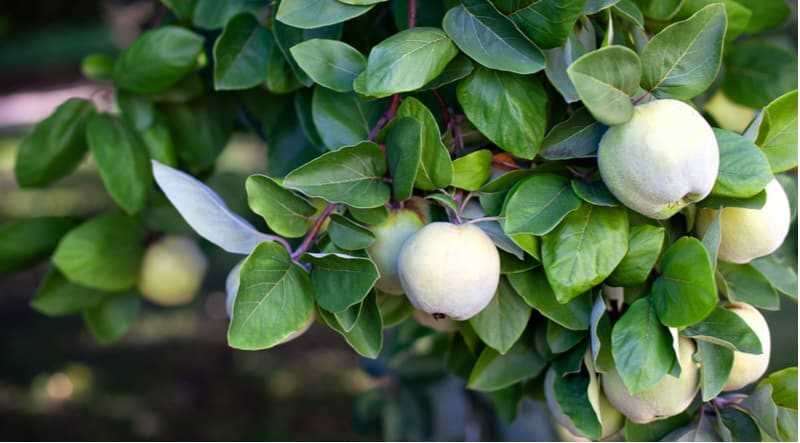

Smyrna quince is a popular variety that is grown primarily for its ornamental value. It produces beautiful pink flowers in the spring and has a compact growth habit, making it suitable for smaller gardens. The fruit of the Smyrna variety is less acidic and is typically enjoyed fresh rather than used for cooking.
Pineapple
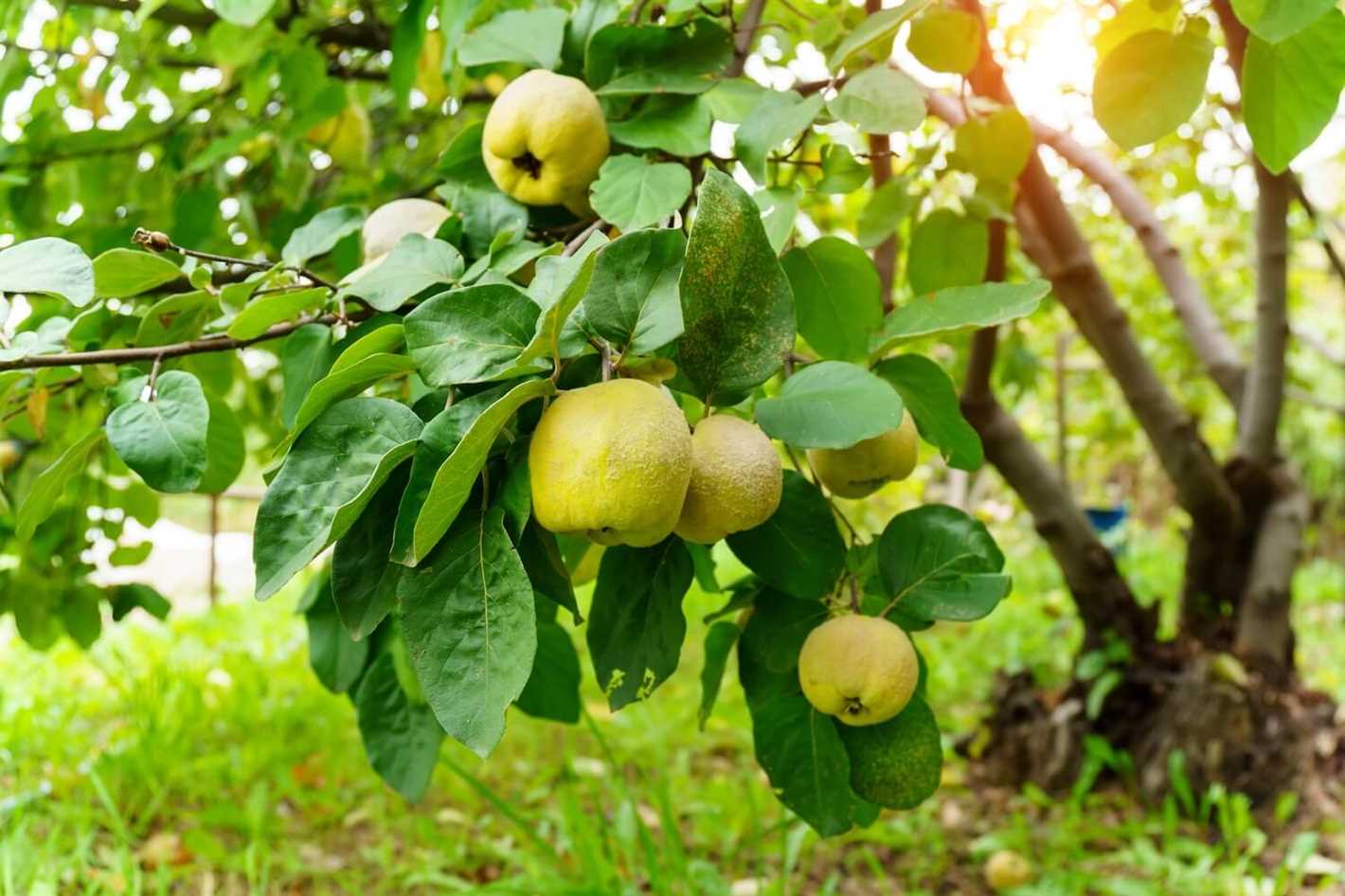

The Pineapple variety of quince is known for its distinct pineapple-like flavor and aroma. The fruit is medium-sized and has a pale yellow color when ripe. This variety is best used for making quince jelly or adding a unique twist to desserts.
Other Considerations
When selecting a quince variety for your garden, there are a few other factors to consider:
- Climate: Different varieties have specific climate preferences, so make sure to choose one that is well-suited to your growing region.
- Size: Consider the size of the tree when selecting a variety. Some quince trees can grow quite large, while others are more compact.
- Pollination: Some quince varieties require cross-pollination from another compatible variety in order to produce fruit. Check the pollination requirements of the variety you choose.
By considering these factors and choosing the right variety for your garden, you can ensure a successful quince harvest and enjoy the benefits of these delicious fruits.
Planting and Growing Quince
Quince is a popular fruit tree that is known for its beautiful flowers and delicious fruit. It is a relatively easy plant to grow and can be a great addition to any garden. Here are some tips for planting and growing quince:
Choose a Suitable Location
Quince trees require full sun and well-drained soil. Choose a location in your garden that receives at least 6-8 hours of direct sunlight each day. The soil should be fertile and well-draining to prevent waterlogging, which can lead to root rot.
Prepare the Soil
Before planting your quince tree, prepare the soil by loosening it with a garden fork or tiller. Remove any weeds or grass from the area and amend the soil with organic matter, such as compost or well-rotted manure. This will help improve the soil structure and provide essential nutrients for your quince tree.
Planting the Quince Tree
When planting your quince tree, dig a hole that is slightly larger and deeper than the root ball. Place the tree in the hole, making sure that the bud union (the swollen area where the tree was grafted onto the rootstock) is above the soil level. Backfill the hole with soil, firming it gently around the roots. Water thoroughly to settle the soil.
Watering and Fertilizing
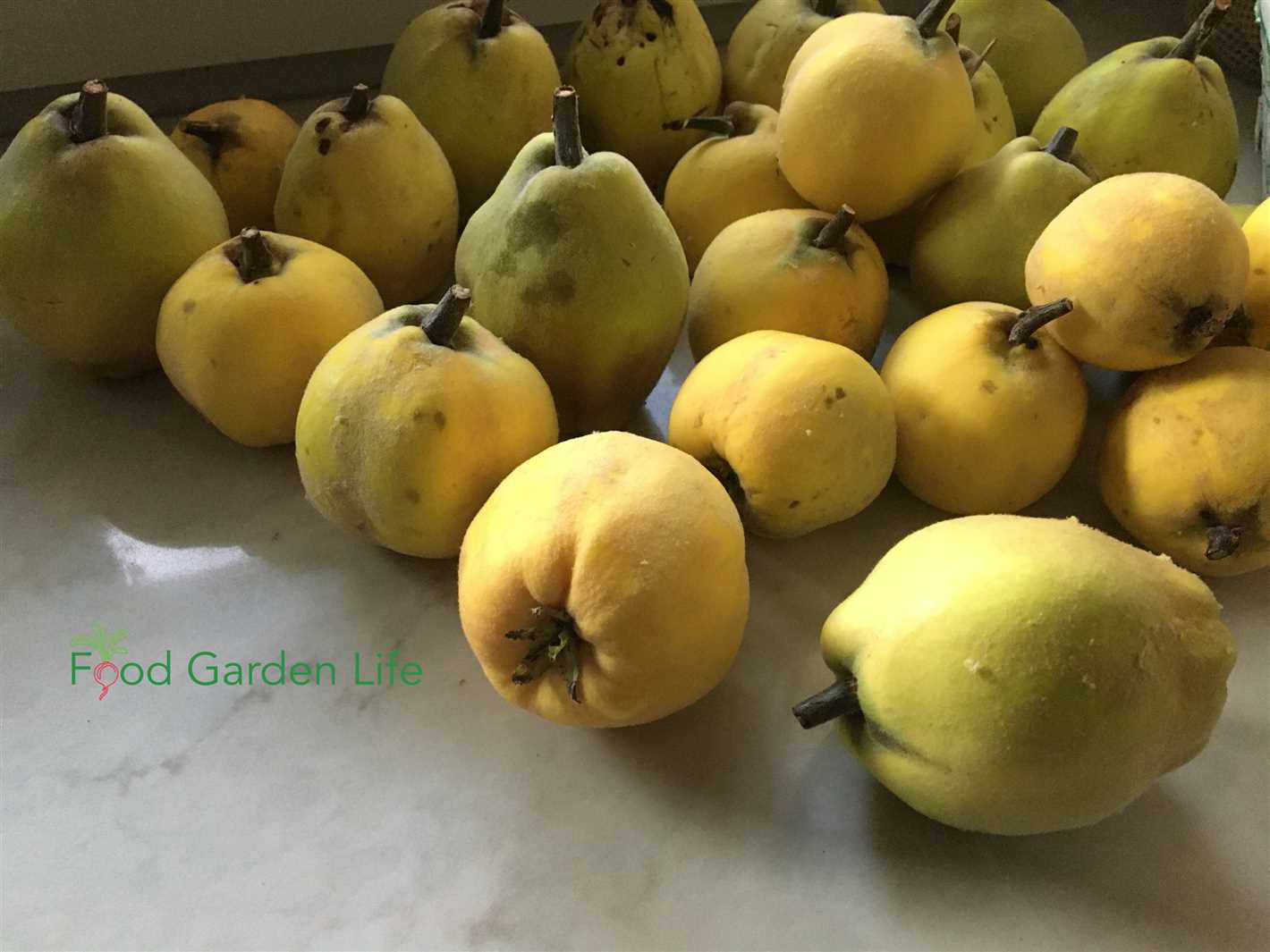

Quince trees require regular watering, especially during dry spells. Water deeply, allowing the water to penetrate the soil and reach the roots. Avoid overwatering, as this can lead to root rot. You can also apply a balanced fertilizer in early spring to provide additional nutrients.
Pruning and Training
Pruning is an essential part of quince tree care. Prune your quince tree in late winter or early spring before the new growth begins. Remove any dead, damaged, or diseased branches, as well as any suckers that emerge from the base of the tree. Also, thin out the branches to improve air circulation and prevent overcrowding.
Pest and Disease Control
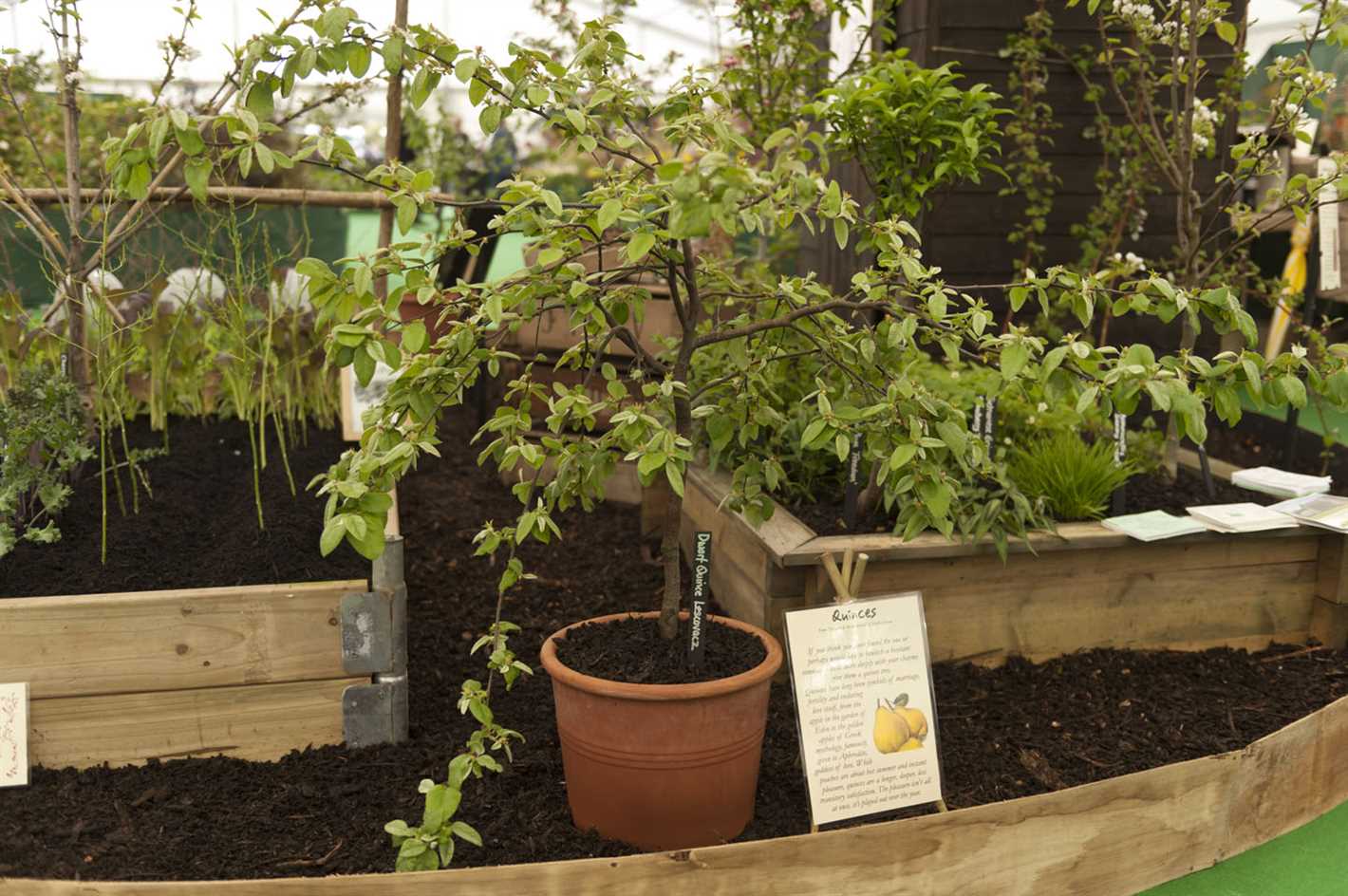

Quince trees can be susceptible to certain pests and diseases, such as aphids, rust, and fire blight. Monitor your tree regularly for any signs of infestation or disease. If necessary, use organic pest control methods or consult with a professional arborist for treatment options.
Harvesting the Fruit
Quince fruit is typically ready to harvest in late summer or early fall. The fruit should be firm and have a yellowish hue. Carefully twist or cut the fruit from the tree, taking care not to damage the branches or remaining fruit. Store the quince in a cool, dry place until ready to use.
By following these tips, you can successfully plant and grow quince in your garden. Enjoy the beautiful flowers and delicious fruit that this versatile fruit tree has to offer!
Pruning Quince Trees
Proper pruning is essential for maintaining the health and productivity of quince trees. Pruning helps to stimulate new growth, control the shape and size of the tree, and promote fruit production. Here are some tips for pruning quince trees:
- Timing: It is best to prune quince trees during the dormant season, in late winter or early spring before new growth begins. This allows the tree to heal quickly and minimizes the risk of disease.
- Remove dead or damaged branches: Start by removing any dead, broken, or diseased branches. This will improve the tree’s overall health and prevent the spread of diseases or pests.
- Thin out crowded branches: Remove any branches that are growing too close together or crossing each other. This will improve air circulation and sunlight penetration, reducing the risk of fungal diseases.
- Shape the tree: Quince trees can be pruned to a central leader or an open-center shape. If you prefer a central leader shape, select a strong, upright branch to be the central leader and remove any competing branches. For an open-center shape, remove the central leader and encourage the growth of several main branches.
- Prune for fruit production: To promote fruit production, selectively prune branches to allow for better light penetration and air circulation. This will help to increase flower and fruit development.
- Prune for size control: If your quince tree is growing too large or out of control, you can prune it to reduce its size. Remove any excess branches and trim back long, unwanted growth.
Remember to always use sharp, clean pruning tools and make clean cuts just above the branch collar. Avoid pruning quince trees during frosty periods, as this can damage the tree. With proper pruning and care, you can enjoy a healthy, productive quince tree in your garden.
Grafting Quince Trees
Grafting is a common method used to propagate quince trees. It allows you to combine the desired characteristics of two different quince varieties onto one tree. Here are some tips for successfully grafting quince trees:
1. Choose the Right Time
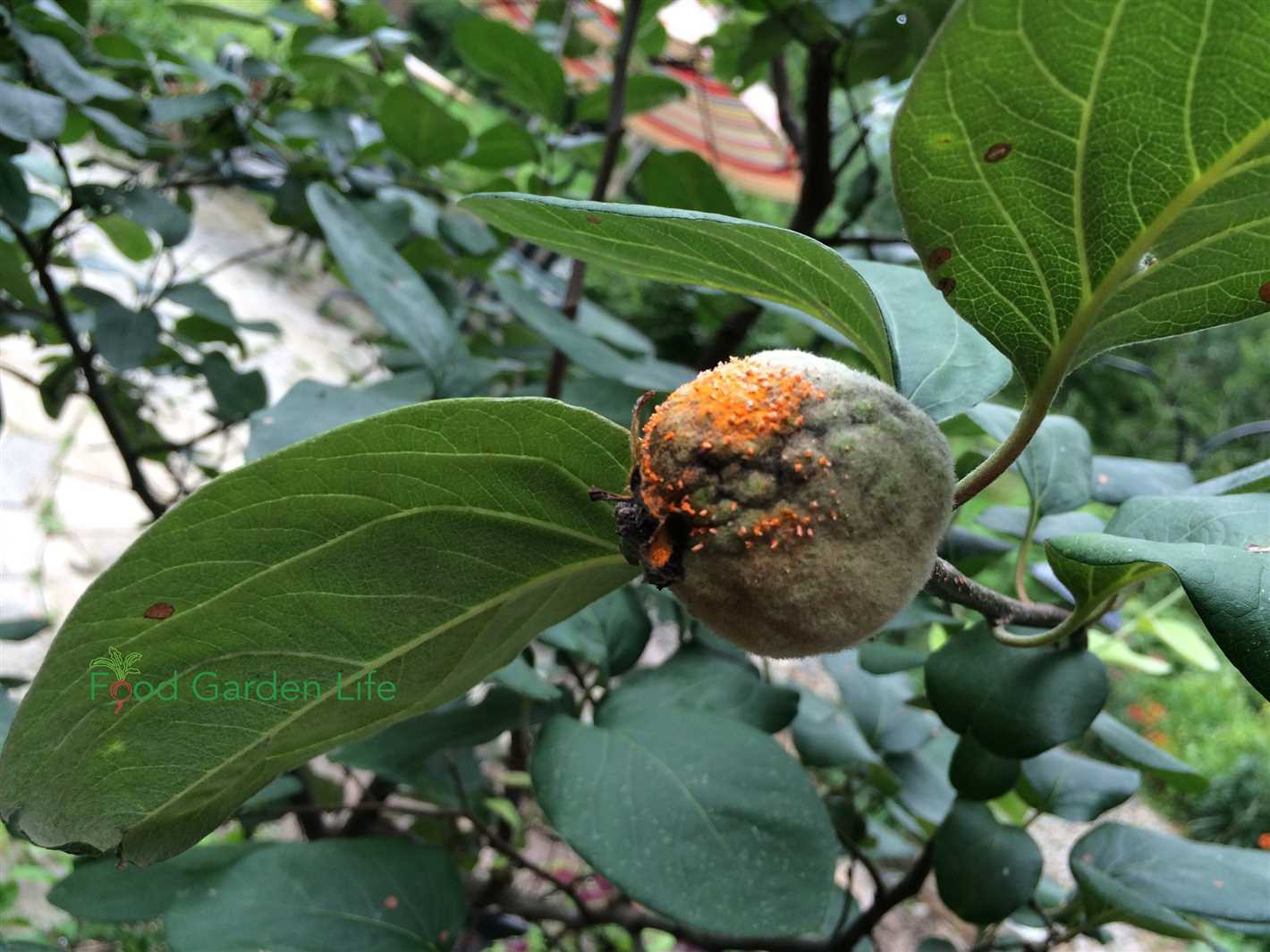

Grafting should be done during the dormant season, usually in late winter or early spring before the buds begin to break. This allows the graft to have the best chance of success.
2. Select the Scion Wood
The scion wood is the part of the desired quince variety that will be grafted onto the rootstock. It should be taken from a healthy, disease-free tree that has the characteristics you desire. Collect scion wood that is about the same diameter as the rootstock.
3. Prepare the Rootstock
The rootstock is the plant onto which the scion wood will be grafted. It should be a healthy, vigorous quince tree that is compatible with the chosen scion variety. Trim the rootstock to remove any damaged or diseased growth.
4. Make the Graft
To graft the scion onto the rootstock, make a diagonal cut on both the scion wood and the rootstock. The cuts should match up as closely as possible to allow for maximum contact. Insert the scion into the rootstock, making sure the cambium layers are aligned.
5. Secure the Graft
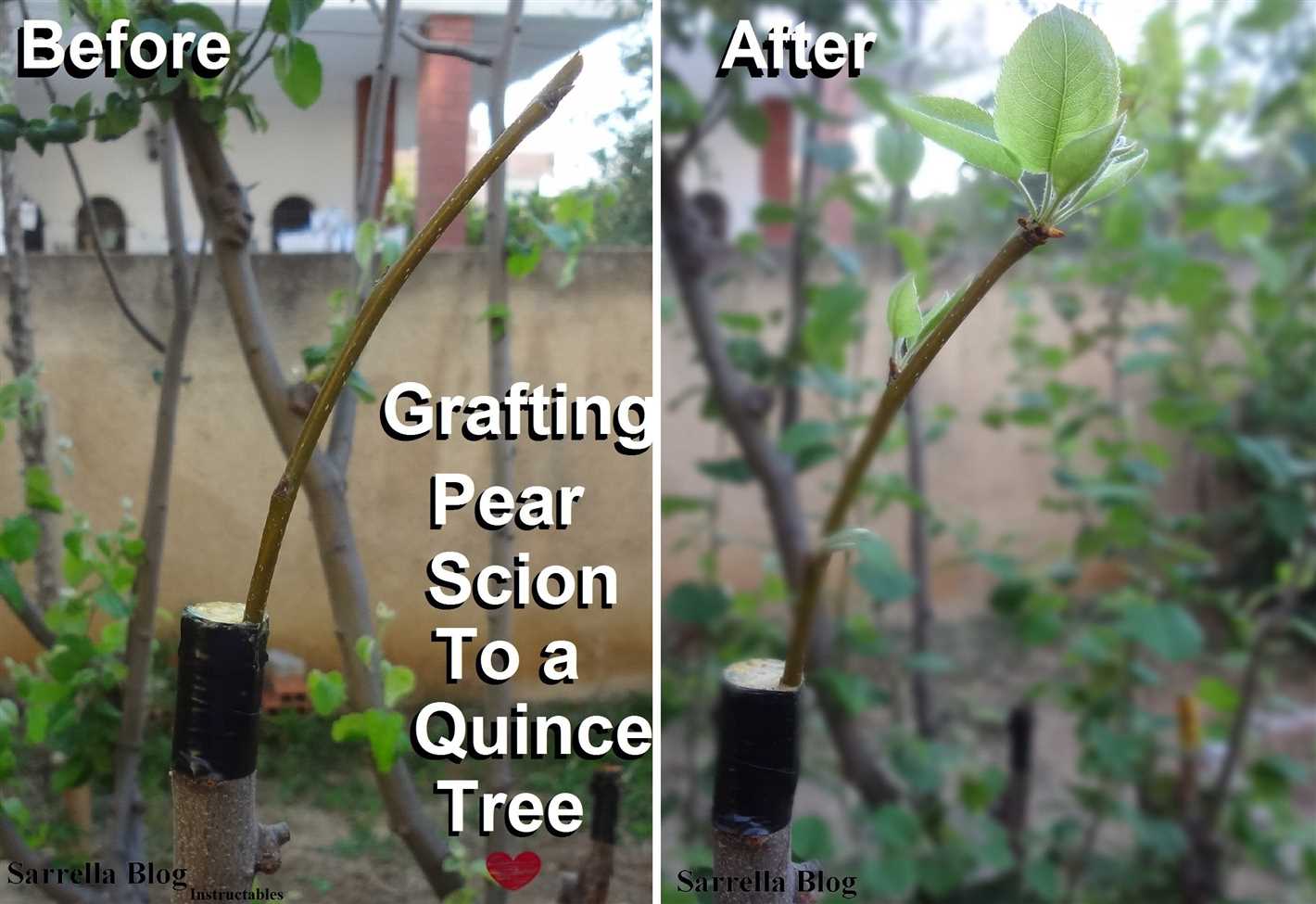

Use grafting tape or a grafting clip to secure the scion to the rootstock. This will prevent movement and ensure that the graft takes hold. Be careful not to wrap the tape too tightly, as this can damage the graft.
6. Protect the Graft
After grafting, it is important to protect the graft union from drying out or being damaged by pests. Apply grafting wax or a grafting compound to seal the graft and keep it moist. Covering the graft with a grafting rubbeг or plastic bag can also provide additional protection.
7. Monitor and Prune
Monitor the grafted quince tree closely for the first few weeks after grafting. Look for signs of growth and ensure that the graft union remains secure. Once the graft has successfully taken, you can prune the tree to shape it and promote healthy growth.
Grafting quince trees can be a rewarding and effective way to propagate desired varieties. With careful selection of scion wood, proper grafting technique, and adequate care after grafting, you can enjoy the benefits of multiple quince varieties on one tree.
Common Pests and Diseases of Quince
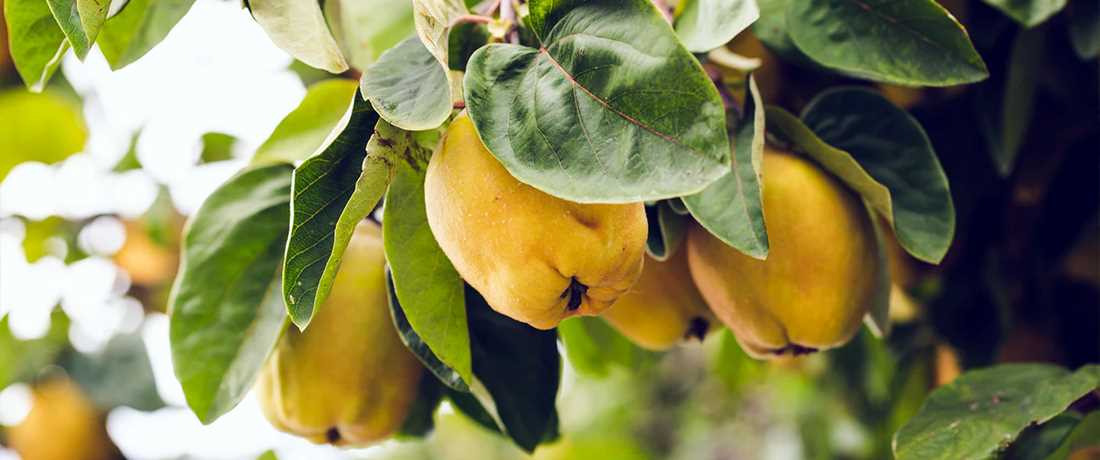

Quince trees are generally healthy and resistant to many pests and diseases. However, they can still be susceptible to a few common issues. Here are some of the pests and diseases that may affect your quince trees:
Pests
- Aphids: These small insects suck sap from the leaves and stems of quince trees, causing distortion and curling of the foliage. Regularly inspect your quince trees for aphids and treat with insecticidal soap if necessary.
- Mites: Mites can cause damage by feeding on the leaves of quince trees, leading to yellowing and bronzing of the foliage. Prune affected branches and apply dormant oil spray during the winter to control mite infestations.
- Quince fruit moth: This moth lays its eggs on developing quince fruit, which then hatch into larvae that tunnel into the fruit, causing it to rot. Monitor your quince trees for signs of infestation, such as small holes in the fruit, and remove any affected fruit to prevent further spread.
- Scale insects: Scale insects are small, immobile pests that attach themselves to the stems and leaves of quince trees, sucking sap and causing yellowing and wilting of the foliage. Use horticultural oil to control scale insect populations.
Diseases
- Fire blight: This bacterial disease can affect quince trees, causing wilting, blackening, and oozing of the branches and twigs. Prune and destroy infected branches, disinfecting pruning tools between cuts to prevent spreading the disease.
- Leaf blight: Leaf blight is a fungal disease that causes brown spots on the leaves of quince trees. Remove and destroy affected leaves to prevent the spread of the fungus.
- Quince rust: This fungal infection causes orange-brown spots on the leaves and fruit of quince trees. Prune and dispose of infected branches and apply a fungicide if necessary.
- Powdery mildew: Powdery mildew is a common fungal disease that appears as a white powdery coating on the leaves and shoots of quince trees. Improve air circulation around the trees and apply a fungicide to prevent the spread of the disease.
Regularly monitoring your quince trees for signs of pests and diseases, maintaining proper hygiene, and taking appropriate preventive measures can help keep your trees healthy and productive.
Harvesting and Using Quince
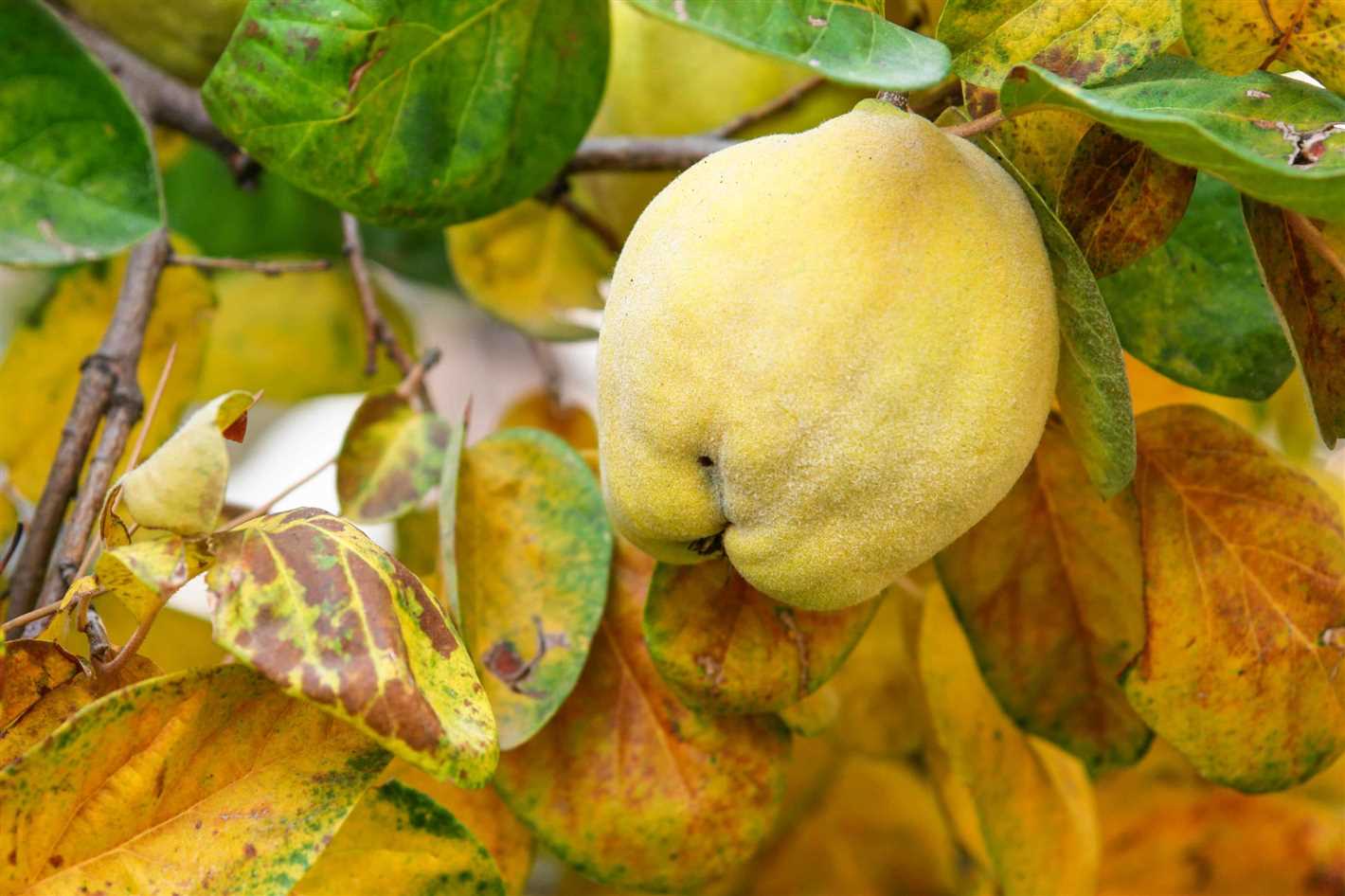

Harvesting Quince
Quince fruits are typically ready to be harvested in late summer to early fall. You can tell that a quince is ready for harvesting by its color, which should be a bright golden yellow. The fruits should also be firm to the touch but not too hard.
To harvest quince, gently twist the fruit off the branch. Be careful not to pull too hard, as the fruit may still be attached to the tree. It’s best to use pruning shears or a sharp knife to cut the stem close to the fruit.
Using Quince
Quince can be enjoyed in various ways, both cooked and raw. Here are some popular ways to use quince:
- Quince paste: Quinces are often used to make a sweet and tangy paste, commonly known as quince cheese. This paste is delicious spread on toast or used as a filling in pastries.
- Jams and jellies: Quince makes excellent jams and jellies due to its naturally high pectin content. You can make quince jelly, quince jam, or even combine quince with other fruits like apples or pears.
- Baking: Quince can be used in various baked goods, such as pies, tarts, and cakes. It adds a unique flavor and fragrance to these desserts.
Before using quince, it’s important to note that the fruit is quite hard and sour when raw. It’s typically best to cook quince to soften it and enhance its flavor. Quince can be boiled, poached, or roasted depending on the recipe.
Storing Quince
Quince can be stored in a cool, dry place for a few weeks. For longer-term storage, you can peel and core the quinces, cut them into slices or cubes, and freeze them in airtight containers. Frozen quince can be used in recipes without the need to defrost it beforehand.
Conclusion
Harvesting quince is a rewarding experience, and the fruit offers a wide range of culinary possibilities. Whether you make quince paste, jams, or use it in baking, quince is sure to add a unique and delicious flavor to your recipes.
Question-answer:
What is the best time to plant quince trees?
The best time to plant quince trees is in late winter or early spring, when the soil is moist and the weather is cool.
Do quince trees require full sun?
Yes, quince trees require full sun to thrive and produce a good crop of fruit.
Can quince trees tolerate drought?
Quince trees are fairly drought-tolerant once established, but they still require regular watering during dry periods, especially when they are young.
What is the purpose of pruning quince trees?
Pruning quince trees is important for removing dead or diseased branches, improving air circulation, controlling the tree’s size and shape, and promoting fruit production.
How should quince trees be pruned?
Quince trees should be pruned in late winter or early spring before new growth begins. Start by removing any dead or diseased branches, then thin out the canopy to improve air circulation and reduce the risk of disease. Finally, shape the tree by cutting back long or unwanted branches.
Can quince be grafted onto other fruit tree rootstocks?
Yes, quince can be grafted onto other fruit tree rootstocks, such as pear or apple, to create a strong and productive tree. Grafting allows you to combine the desirable qualities of different plants into one tree.







